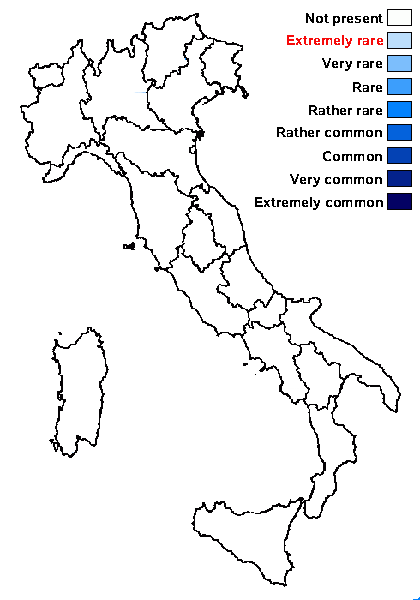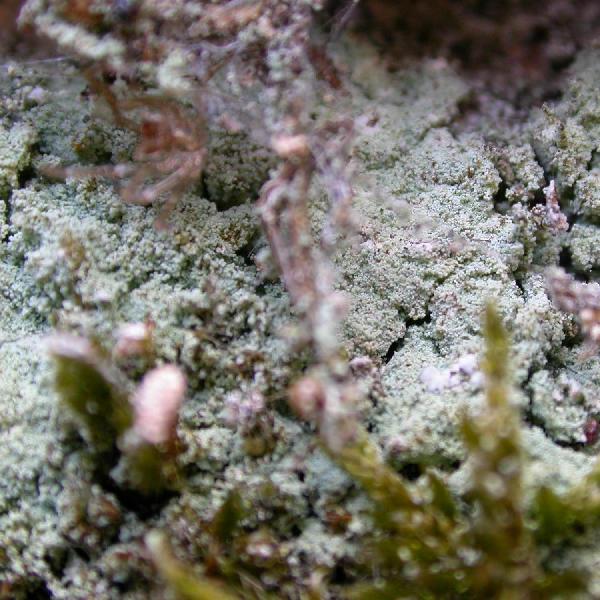Leprocaulon calcicola Earl.-Benn., Orange, Hitch & Mark Powell
in Orange & al., Lichenologist, 49: 184, 2017.
Synonyms:
Distribution:
Description: Thallus leprose, episubstratic, 0.1-0.5 mm thick, pale to mid blue-grey when dry, brighter green when moist, entirely consisting of 60-120 μm wide, ecorticate granules without projecting hyphae, the inner granules whitish, without a true medulla. Apothecia and pycnidia unknown. Photobiont chlorococcoid, the cells globose, 8-15 μm wide. Spot tests: K-, C-, KC+ pale yellow, P-. Chemistry: usnic acid and zeorin. Note: on shaded to sunny, vertical or near-vertical surfaces of old mortared walls, sometimes overgrowing mosses, known from the British Isles and Southern France (Roux & al. 2025b). To be looked for in Italy.
Growth form: Leprose
Substrata: rocks
Photobiont: green algae other than Trentepohlia
Reproductive strategy: mainly asexual, by soredia, or soredia-like structures (e.g. blastidia)
Most common in areas with a humid-warm climate (e.g. most of Tyrrenian Italy)

Predictive model
Growth form: Leprose
Substrata: rocks
Photobiont: green algae other than Trentepohlia
Reproductive strategy: mainly asexual, by soredia, or soredia-like structures (e.g. blastidia)
Most common in areas with a humid-warm climate (e.g. most of Tyrrenian Italy)

Predictive model


